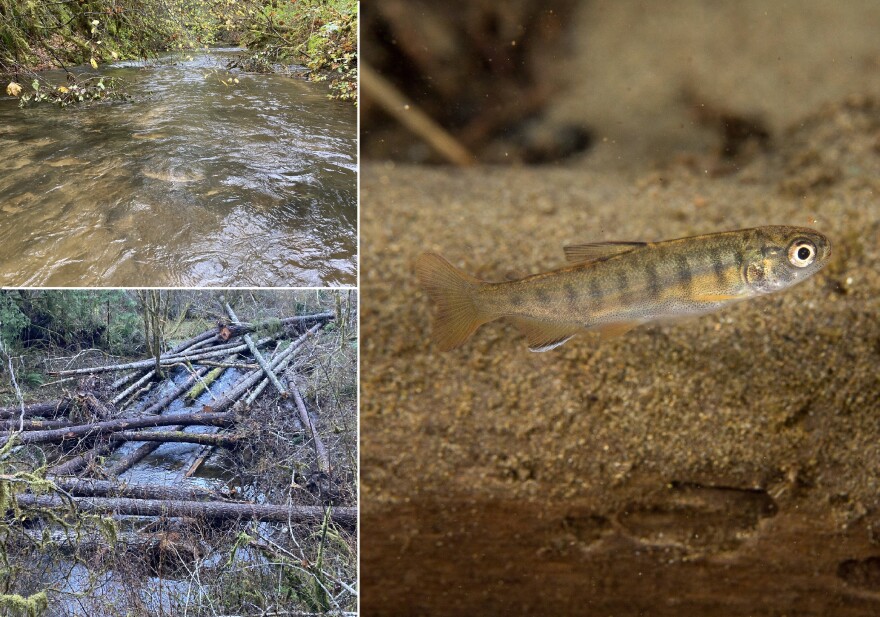This summer, the endangered Oregon Coast Coho salmon will get some help from allies…in a helicopter.
In late summer, a Chinook helicopter will lower 220 trees into Deadwood Creek, McLeod Creek, and Condon Creek. The idea is to create “complexity” in waterways affected by 150 years’ worth of development, farming, and logging, in order to help Coho salmon spawn and thrive.
Caleb Mentzer is a project manager with the Siuslaw Watershed Council, that’s carrying out the operation.
“Root wads is something we’d really, really, love to see. You can kinda visualize how much complexities’ around that root wad, and how a little juvenile coho could use that as a really really, great…what we call “fish hotels,” explained Mentzer.

"Because they can hang out in that one root wad, and it provides them shelter from predators, it provides them food, in terms of things falling down, of the log.”
A $417,000 grant from the Oregon Watershed Enhancement Board is funding the effort. Mentzer added that the schedule might be pushed back if the helicopter needs to be used for firefighting.
Mentzer said this builds on earlier efforts that have helped some of the fish’s numbers rebound a little.
“But historically speaking, we’re still at less than a tenth of our historic numbers here in the Siuslaw. Some cannery records (have) up to 500,000 Coho just returning to the Siuslaw. And now we’re down 4,000-5,000 in a good year.”
Copyright @2022, KLCC.




